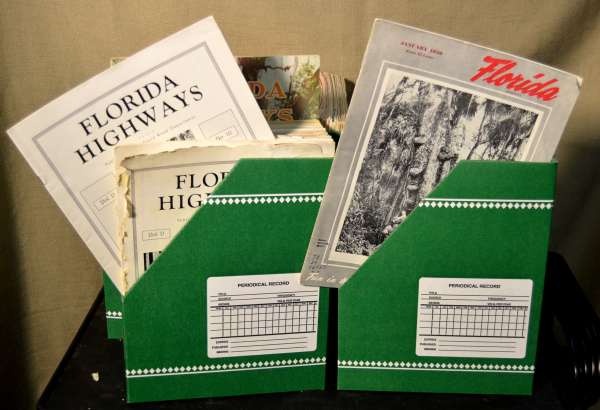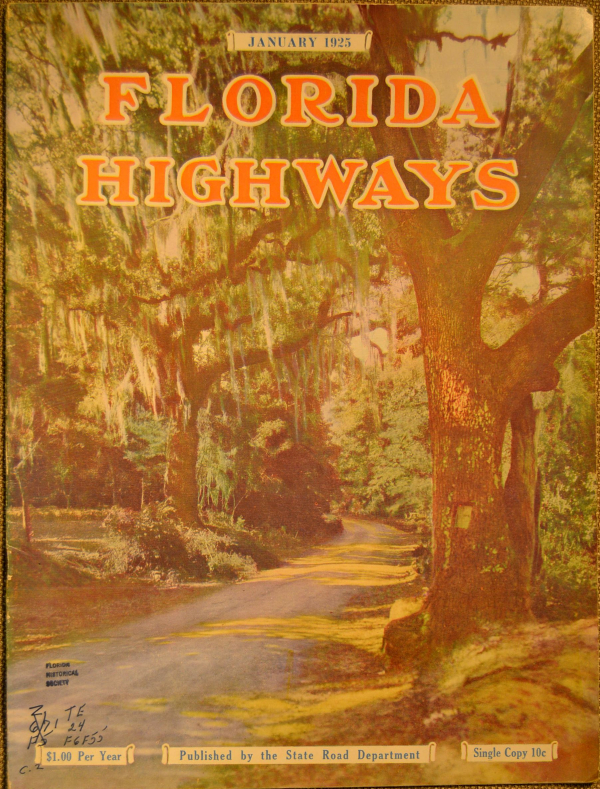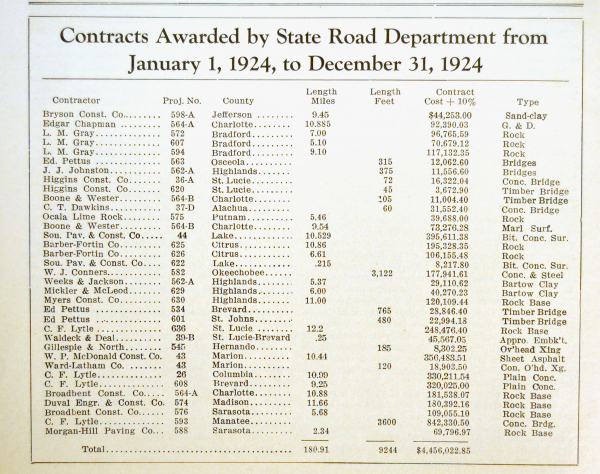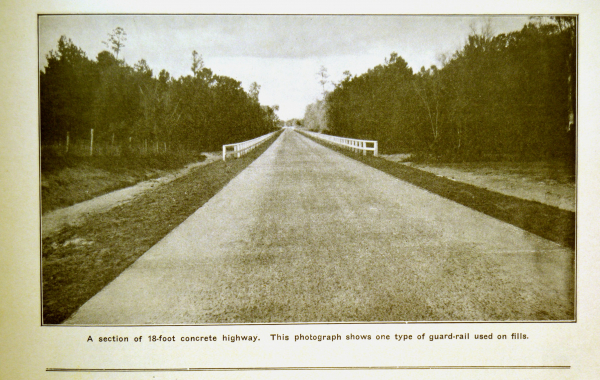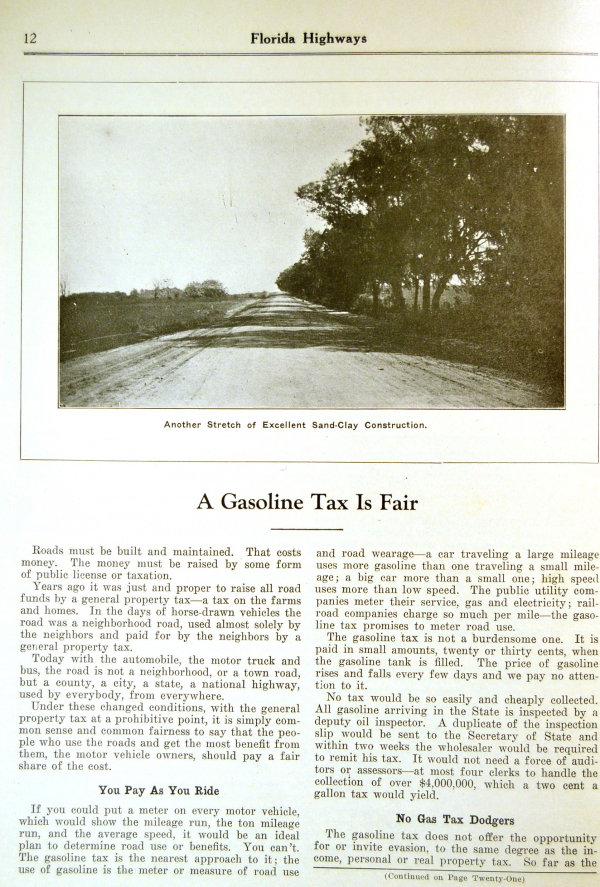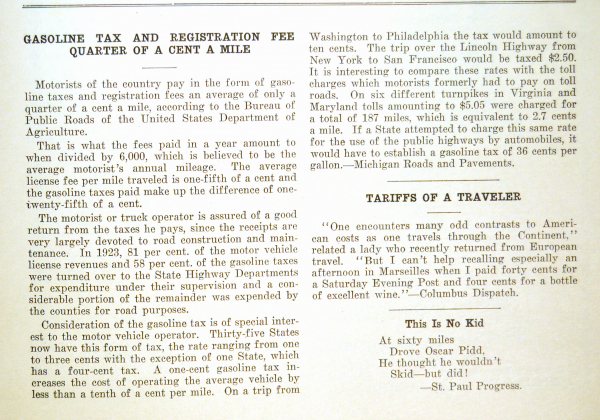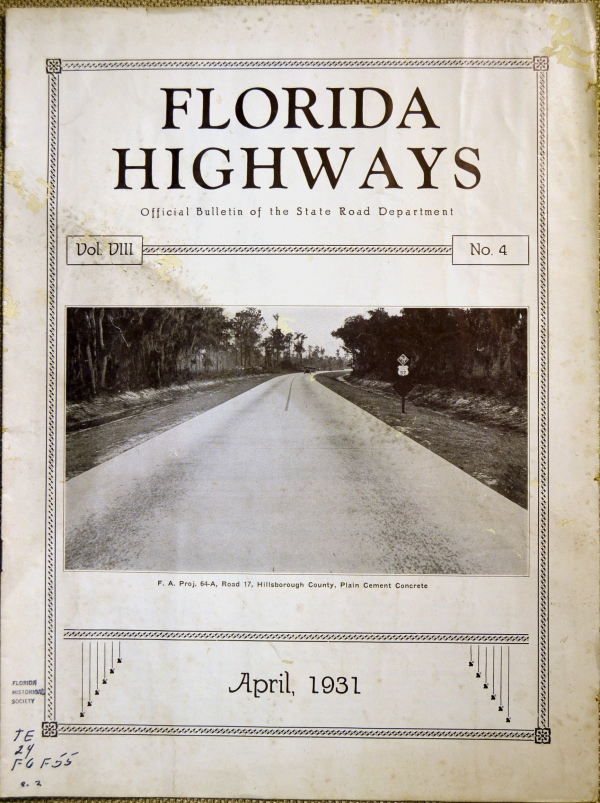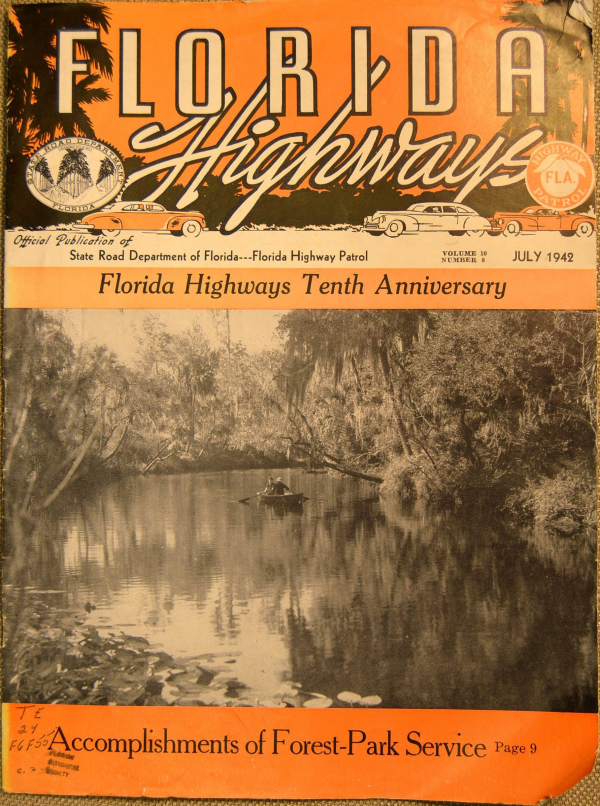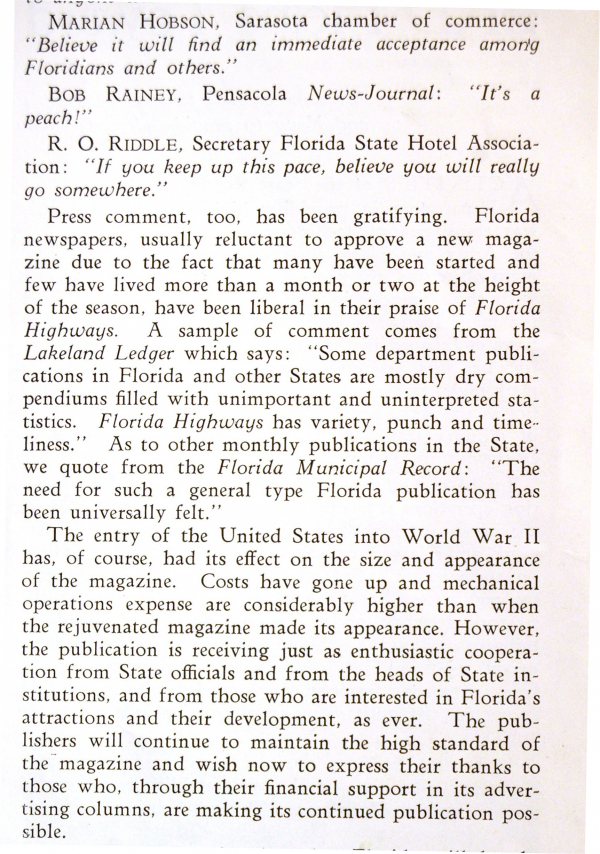In an era when “road work” means years of extensive delays while Interstates are expanded and barricades with yellow flashers fill the roadside landscape, it might be hard to imagine being excited about a road building project. But in the early 20th century, especially in a largely rural state like Florida, road improvement was a big deal. In most of America, towns were connected by dirt trails and horse paths largely unchanged since colonial times. During Florida’s rainy season, it was not unusual for the trails to flood and become impassable.
For a state dependant on a growing tourist industry, this was simply unacceptable. But what is a relatively poor agricultural state to do?
In the late 1870’s bicycle riding was growing in popularity. For enthusiasts, roads that were mud in winter and dust in summer were not good enough. In May, 1880, bicycle fans, riding clubs and, wait for it... manufacturers, met in Newport, Rhode Island to form the “League of American Wheelmen”. The effort went national, started publishing Good Roads Magazine, became known as “the good roads movement” and started militating for government action.
It took a while. So long, in fact, that bicycles waned and automobile use gained momentum. Other groups and manufacturers took up the cause. First came public-private ventures such as the Lincoln Highway coast-to-coast going east-west and the Dixie Highway (now U.S.1) from Canada to Miami. In 1916 President Woodrow Wilson signed the Federal Aid Road Act, providing funds for joint Federal and State road construction. After The Great War, seeing the importance of good road transportation, Congress passed another bill with even more construction and maintenance money. The future was here.
Anticipating all this, Florida established the State Road Department in 1915 and began work. The improvements, with rocks, gravel and cement, were crude by modern standards, but the results were revolutionary. Communities were connected year round via two lane roads maintained by the state.
To promote the work, and to advertise the quality of the state’s highways, the department began publishing the monthly magazine Florida Highways. The Library of Florida History collection includes every edition from January, 1925 to January, 1953. It is a valuable source for historians and anyone researching the state’s road system.
Naturally, it includes a lot of data about contracts, costs and project details.
The articles and photos make it possible to trace the development of highway engineering and safety designs as well as to follow individual construction projects. As the magazine matured, it started to include more general articles.
Of course there was ongoing debate over how to pay for all these needed roads, and the idea of a gasoline tax was proposed. Every vehicle that used a road needed gasoline, more or less in proportion to the use. How better than to place a tax on each gallon of gas at the pump to get the users to pay for the infrastructure? That tax is a good portion of the amount you pay at the pump today.
Naturally the magazine included detailed analysis of the impact that tax had on drivers in that day. Note the average annual mileage on a car was estimated at 6,000 miles a year. That included a growing number of what came to be called “tin can tourists” - adventurous car owners who would explore Florida and as often as not pull over and pitch a tent along the side of the road.
Over the years the magazine changed and expanded its mission, from a report on the activities of the Road Department...
...to more stories during World War II about the importance of roads to the war effort and after the war about the quality of roads in Florida, encouraging more people from out of state to visit, and pay that gas tax.
The production of such a magazine was not cheap.
The department cannot be blamed for taking some space in an editorial to defend the publication by citing laudatory quotes from influential individuals and the Florida press. They must have been especially proud of an opinion from the Lakeland Ledger that the magazine had “variety, punch and timeliness”.
